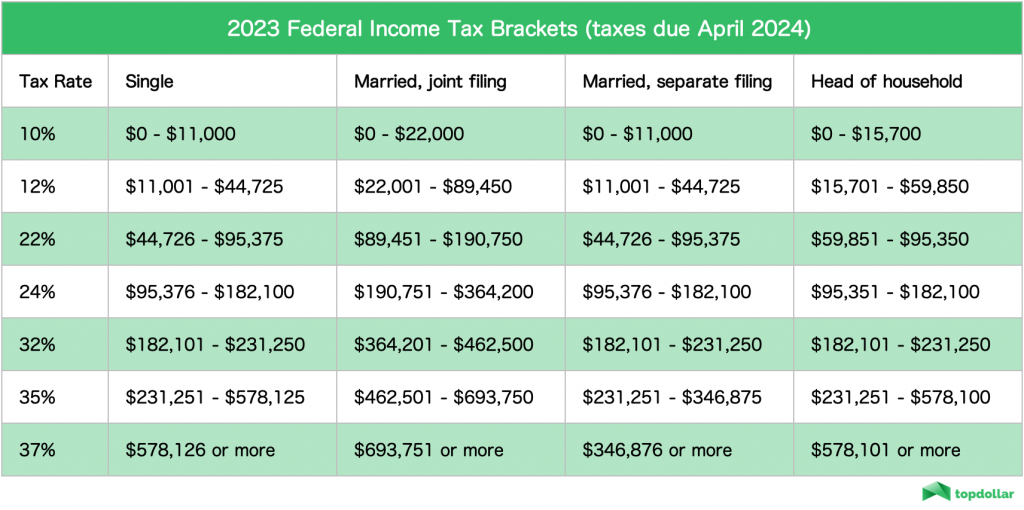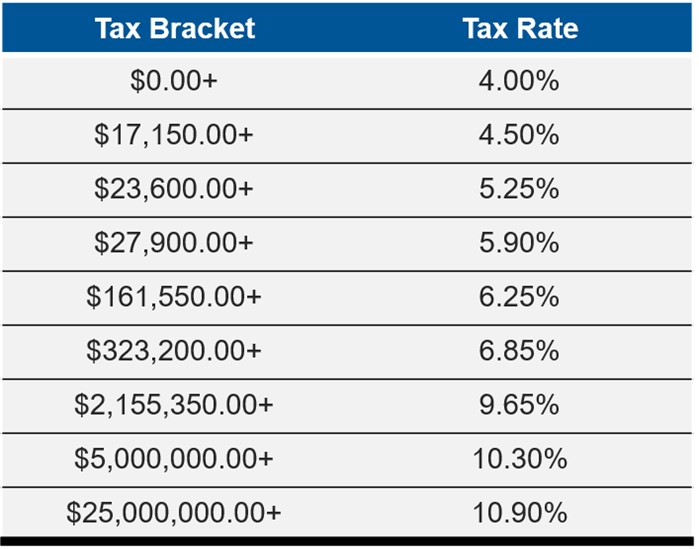New York State TA brackets play a critical role in determining how much tax individuals and businesses owe to the state government each year. These brackets are designed to ensure that taxes are levied fairly based on income levels, with higher earners paying a larger percentage of their income compared to those earning less. The state's tax authority regularly updates these brackets to align with economic conditions and legislative changes. For residents of New York, staying informed about these brackets is essential for effective financial planning and compliance with state tax laws. In this article, we will delve into the intricacies of New York State TA brackets, offering actionable insights for taxpayers.
Taxes are a fundamental aspect of living in New York State, and understanding the TA brackets is key to managing finances responsibly. Whether you are a resident, business owner, or someone looking to relocate to the state, having a clear grasp of how these brackets work can help you make informed decisions. From the basics of tax brackets to the latest updates and potential changes, we aim to provide you with comprehensive information that adds value to your understanding of New York's tax system.
This article is structured to cater to individuals at all levels of familiarity with tax brackets. We will cover everything from the fundamentals of how brackets are structured to advanced strategies for optimizing your tax payments. By the end of this guide, you will have a robust understanding of NY State TA brackets and how they impact your financial situation. Let’s begin by exploring the key elements of the state's tax system and what you need to know.
Read also:The Enchanting World Of Sailor Moon Cosmos A Full Movie Experience In English Dub
What Are NY State TA Brackets?
The concept of tax brackets may seem complex at first glance, but it is relatively straightforward once broken down. NY State TA brackets are essentially ranges of income that correspond to specific tax rates. Each bracket applies to a portion of an individual's or business's taxable income, and the rate increases as income rises. This progressive tax system ensures that those with higher earnings contribute a larger share to the state's revenue, while lower-income individuals pay less in proportion to their income.
To illustrate, if you earn $50,000 per year, your income will be taxed at different rates depending on which portion falls within each bracket. The state government publishes these brackets annually, and they are subject to change based on inflation adjustments and legislative updates. Understanding how these brackets work is crucial for accurately calculating your tax liability and planning for future expenses.
Why Are NY State TA Brackets Important?
NY State TA brackets hold significant importance for taxpayers because they directly influence the amount of tax owed. By knowing which bracket your income falls into, you can better estimate your tax liability and plan accordingly. For instance, if you anticipate a raise or additional income in the coming year, you might move into a higher tax bracket, necessitating adjustments to your budget. Additionally, understanding these brackets can help you identify potential deductions or credits that could lower your taxable income and, consequently, your tax burden.
Moreover, staying informed about NY State TA brackets allows you to take advantage of tax-saving strategies. For example, contributing to retirement accounts or taking advantage of education credits can reduce your taxable income, potentially keeping you in a lower bracket. This knowledge empowers you to make informed financial decisions that align with your long-term goals.
How Are NY State TA Brackets Calculated?
The calculation of NY State TA brackets involves several factors, including your filing status, income level, and any applicable deductions or credits. The state uses a progressive tax system, meaning that as your income increases, so does the tax rate applied to the portion of income within each bracket. For example, the first $8,500 of your income might be taxed at 4%, while the next $10,000 could be taxed at 4.5%, and so on.
To calculate your tax liability, you would multiply the income within each bracket by the corresponding tax rate and then sum up the results. While this process can be done manually, most taxpayers use tax software or consult a professional to ensure accuracy. It’s also important to note that the state provides resources and tools to help you calculate your taxes, including online calculators and detailed guides.
Read also:Subhashree Sahu New Video Unveiling The Latest Trend And Insights
How Do NY State TA Brackets Impact Taxpayers?
The impact of NY State TA brackets on taxpayers varies depending on individual circumstances. For those in lower brackets, the tax burden is relatively light, allowing for more disposable income. Conversely, individuals in higher brackets may find themselves paying a significant portion of their earnings in taxes. This disparity highlights the importance of understanding how these brackets work and planning accordingly.
In addition to affecting personal finances, NY State TA brackets also influence business operations. Companies must account for these brackets when calculating payroll taxes and determining employee compensation packages. By understanding the implications of these brackets, businesses can better manage their financial obligations and make strategic decisions that benefit both the company and its employees.
Can NY State TA Brackets Change Over Time?
Yes, NY State TA brackets can and do change over time. These changes are typically driven by legislative actions, economic conditions, and inflation adjustments. For example, during periods of inflation, the state may adjust the income thresholds for each bracket to prevent individuals from being pushed into higher tax brackets due to rising prices. Similarly, legislative changes can introduce new brackets or alter existing ones to reflect policy priorities.
It’s important for taxpayers to stay updated on these changes, as they can significantly impact your tax liability. Subscribing to state tax authority newsletters or consulting with a tax professional can help you stay informed and prepared for any adjustments to the brackets.
What Should You Know About NY State TA Brackets Before Filing Taxes?
Before filing your taxes, it’s essential to have a clear understanding of NY State TA brackets and how they apply to your situation. Start by determining your filing status, as this can affect which brackets apply to you. Next, gather all necessary documentation, including income statements, deduction records, and credit information. This will help you accurately calculate your taxable income and identify any potential savings opportunities.
Additionally, consider consulting a tax professional if you have a complex financial situation or are unsure about how the brackets impact your tax liability. They can provide guidance on maximizing deductions and credits, ensuring you pay only what you owe and take full advantage of available benefits.
How Can You Minimize Your Tax Liability Using NY State TA Brackets?
Minimizing your tax liability is a goal shared by many taxpayers, and understanding NY State TA brackets is a crucial step in achieving this. One effective strategy is to maximize deductions and credits, which can lower your taxable income and potentially keep you in a lower bracket. Common deductions include mortgage interest, charitable contributions, and medical expenses, while credits such as the Earned Income Tax Credit (EITC) can further reduce your tax burden.
Another approach is to take advantage of retirement savings accounts, such as IRAs or 401(k)s, which allow you to defer income and reduce your current taxable income. Additionally, timing certain financial transactions, such as selling investments or receiving bonuses, can help you manage your income and stay within a favorable tax bracket. By combining these strategies, you can optimize your tax payments and retain more of your earnings.
Are There Any Common Misconceptions About NY State TA Brackets?
Yes, there are several common misconceptions about NY State TA brackets that can lead to confusion or errors in tax planning. One prevalent myth is that moving into a higher bracket means all your income will be taxed at the higher rate. In reality, only the portion of your income that falls within the new bracket is subject to the higher tax rate. Another misconception is that deductions and credits have the same impact on your tax liability, when in fact, credits provide a dollar-for-dollar reduction in taxes owed, while deductions reduce your taxable income.
To avoid falling prey to these misconceptions, it’s important to educate yourself about how the brackets work and seek clarification from trusted sources or professionals when needed. By doing so, you can make informed decisions and avoid costly mistakes.
What Resources Are Available to Learn More About NY State TA Brackets?
Several resources are available to help you learn more about NY State TA brackets and stay informed about any changes. The New York State Department of Taxation and Finance offers comprehensive guides, calculators, and FAQs on their website, providing valuable insights into the state's tax system. Additionally, many financial institutions and tax preparation services offer tools and resources to assist with tax planning and calculation.
For those seeking more personalized guidance, consulting with a tax professional or accountant can provide tailored advice and support. They can help you navigate the complexities of the tax brackets and develop strategies to optimize your financial situation. By leveraging these resources, you can gain a deeper understanding of NY State TA brackets and make the most of your tax planning efforts.
Conclusion: Mastering NY State TA Brackets for Financial Success
Understanding NY State TA brackets is a vital aspect of financial literacy for anyone living or doing business in New York. By familiarizing yourself with how these brackets work, you can better manage your tax obligations and make informed decisions about your finances. Whether you’re a first-time filer or a seasoned taxpayer, staying informed and proactive is key to achieving financial success.
This guide has provided a comprehensive overview of NY State TA brackets, covering everything from the basics to advanced strategies for minimizing your tax liability. By applying the knowledge and tips shared here, you can take control of your financial future and ensure compliance with state tax laws. Remember, the more you know, the better equipped you are to navigate the complexities of the tax system and achieve your financial goals.
Table of Contents
- What Are NY State TA Brackets?
- Why Are NY State TA Brackets Important?
- How Are NY State TA Brackets Calculated?
- How Do NY State TA Brackets Impact Taxpayers?
- Can NY State TA Brackets Change Over Time?
- What Should You Know About NY State TA Brackets Before Filing Taxes?
- How Can You Minimize Your Tax Liability Using NY State TA Brackets?
- Are There Any Common Misconceptions About NY State TA Brackets?
- What Resources Are Available to Learn More About NY State TA Brackets?
- Conclusion: Mastering NY State TA Brackets for Financial Success


